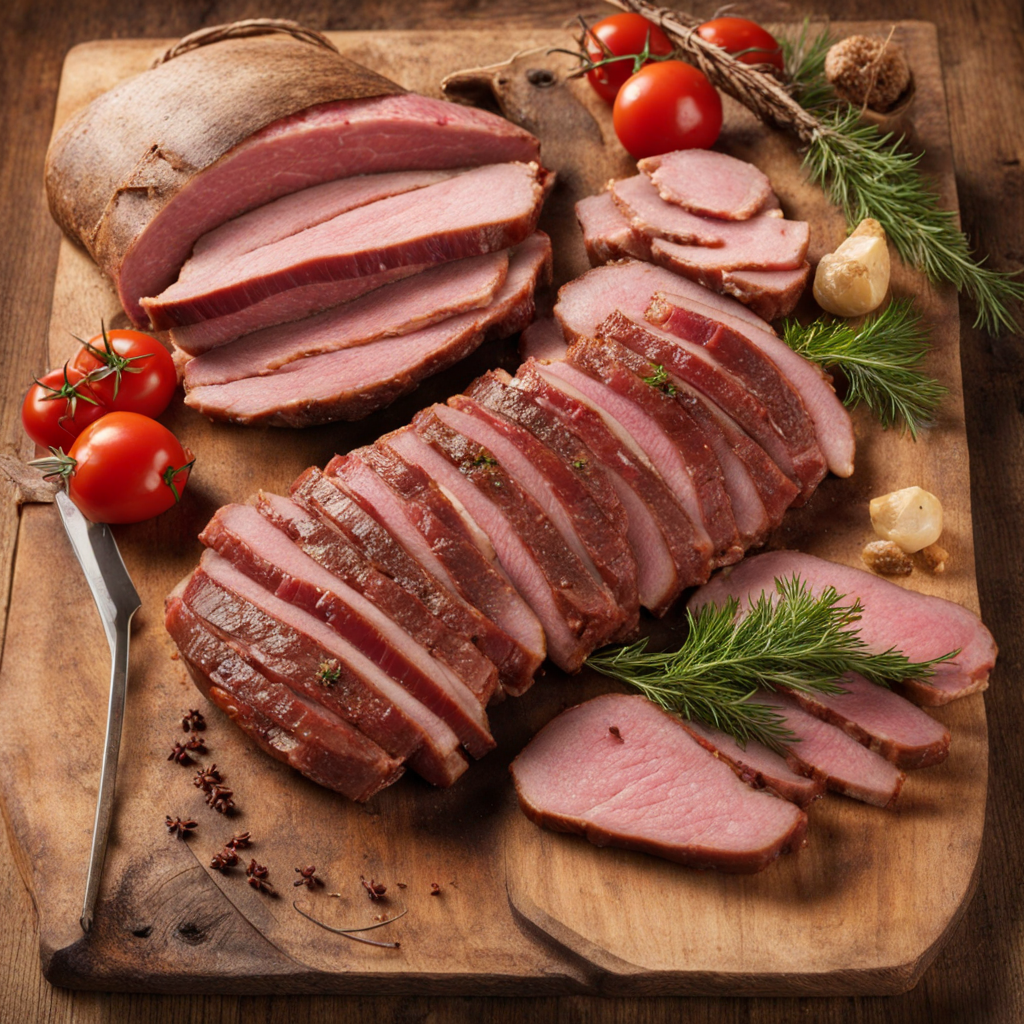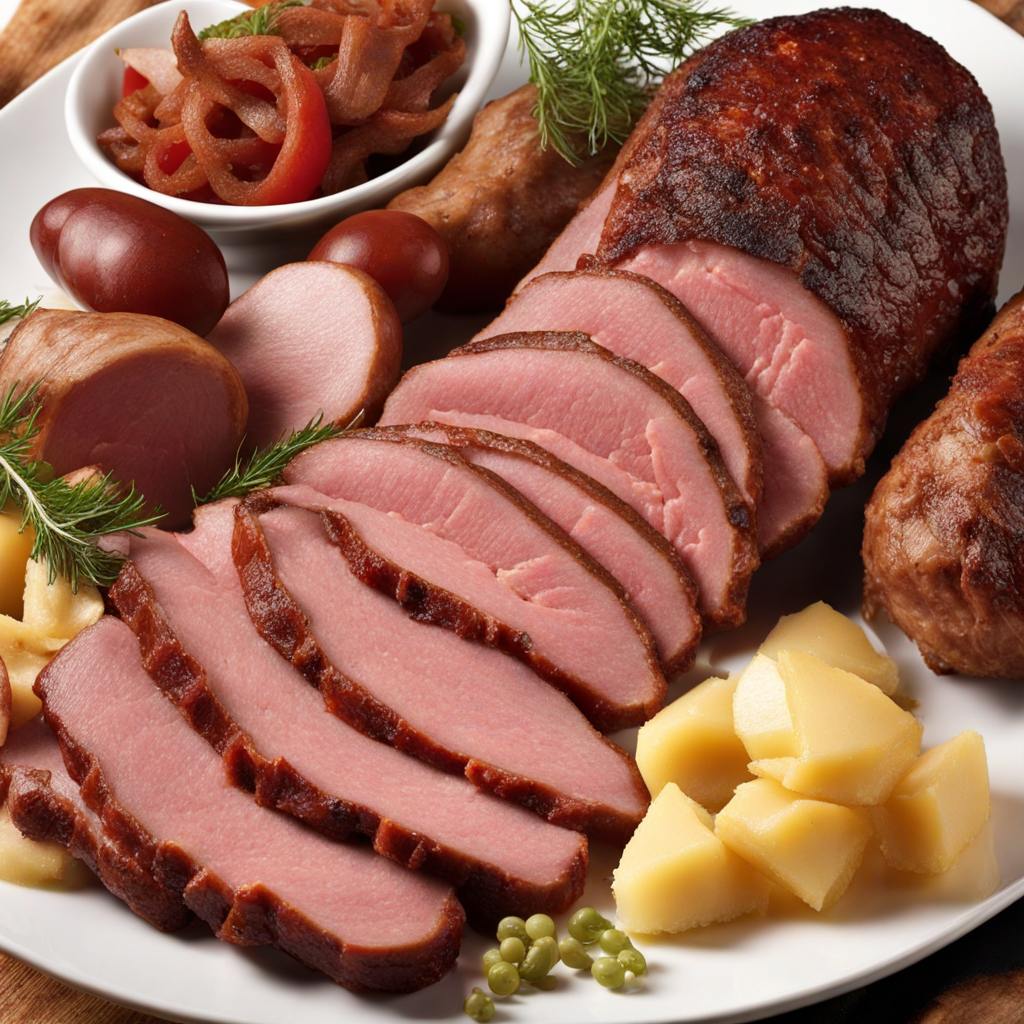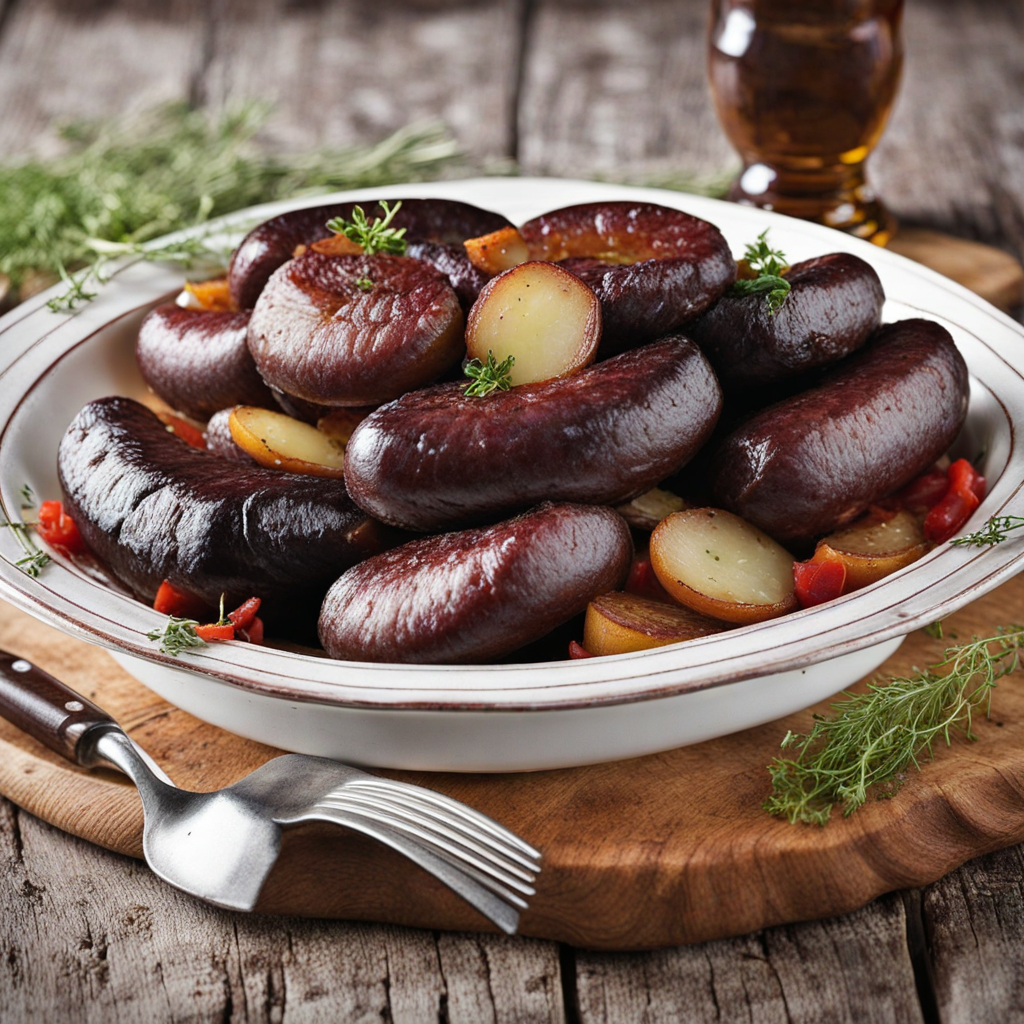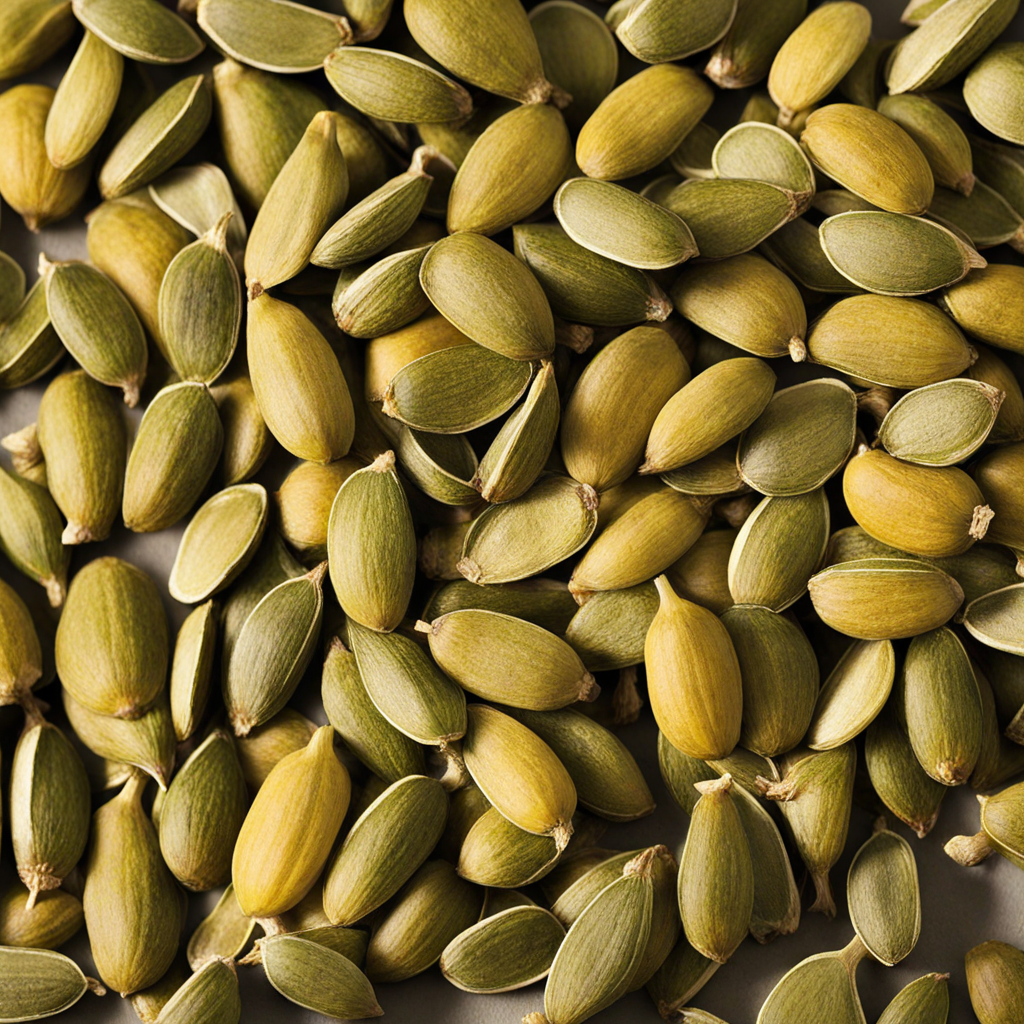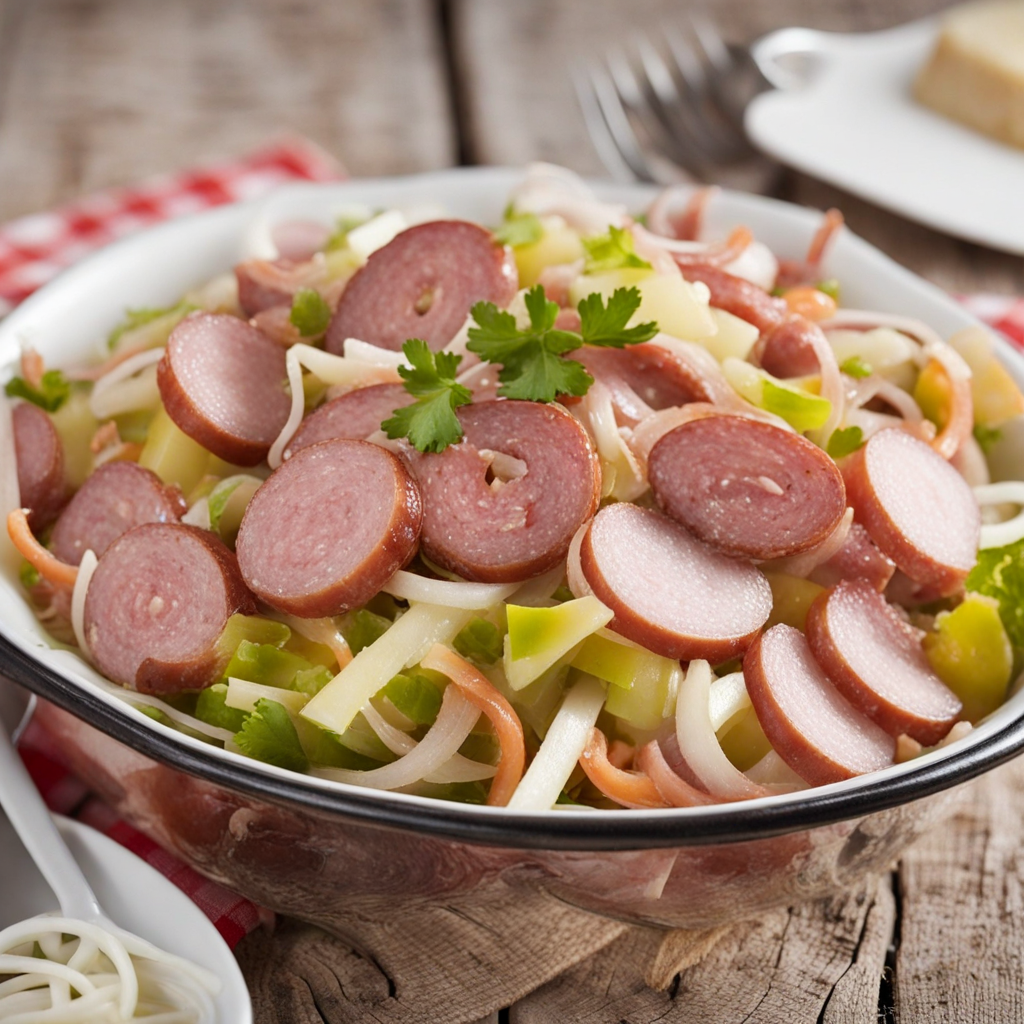Selchfleisch
Selchfleisch is a traditional Austrian smoked meat that embodies the rustic flavors of the Alpine region. Typically made from pork, it undergoes a meticulous curing process that includes salting and seasoning with a blend of spices such as garlic, pepper, and juniper berries. The meat is then gently smoked over beechwood or other local woods, imparting a rich, aromatic flavor that is both savory and slightly sweet. The resulting product is a beautifully marbled cut, often featuring a deep pink hue that hints at its smoky essence. When served, Selchfleisch has a tender texture that melts in your mouth, making it a delightful addition to various dishes. It is commonly enjoyed as part of a hearty platter, accompanied by traditional sides such as sauerkraut, potatoes, or freshly baked bread. The smokiness complements the acidity of the sauerkraut beautifully, creating a harmonious balance that is characteristic of Austrian cuisine. Additionally, it can be sliced thinly and used in sandwiches or salads, showcasing its versatility beyond the classic presentations. For those looking to explore new flavors, Selchfleisch offers a unique taste experience that captures the essence of Austrian culinary traditions. Its robust, smoky flavor profile pairs wonderfully with a range of beverages, from crisp white wines to hearty local beers. Whether enjoyed as a main dish or as part of a charcuterie board, Selchfleisch invites food lovers to savor the authentic tastes of Austria while appreciating the craftsmanship behind this beloved smoked delicacy.
How It Became This Dish
Selchfleisch: A Journey Through Time and Taste in Austria #### Origins of Selchfleisch Selchfleisch, a traditional Austrian delicacy, is a smoked meat that has become emblematic of the country's culinary heritage. The word "Selchfleisch" itself derives from the German "selchen," meaning "to smoke." The practice of smoking meat is believed to have originated centuries ago as a preservation method, exploiting the antibacterial properties of smoke to extend the shelf life of perishable foods. In Austria, this method became particularly important in the alpine regions, where harsh winters necessitated the storage of food for extended periods. The origins of Selchfleisch can be traced back to the Austro-Hungarian Empire, where methods of meat preservation were critical for sustenance. Farmers and villagers would cure and smoke meats—often pork, but also beef and game—to ensure they could survive the long months when fresh produce was scarce. The use of local ingredients, combined with traditional smoking techniques, resulted in a product that was not only practical but also flavorful. #### Cultural Significance In Austria, Selchfleisch is more than just a food item; it is a symbol of regional identity and culinary pride. The dish holds a special place in the hearts and homes of many Austrians, often featuring prominently in festive occasions and communal gatherings. It is typically prepared from the shoulder or belly of the pig, which is cured with a blend of salt, spices, and sometimes sugar, before being smoked over beech or fir wood. This method imparts a unique flavor profile that balances the savory richness of the meat with a subtle smokiness. Selchfleisch is often served in various forms, whether as a main dish accompanied by dumplings and sauerkraut, sliced thinly and served on a platter, or even incorporated into soups and stews. Each region in Austria has its own twist on the dish, reflecting local tastes and traditions. In Styria, for example, it is commonly enjoyed as part of a hearty platter known as "Brettljause," which includes cheeses, pickles, and bread, while in Tyrol, it may be paired with local potatoes and seasonal vegetables. #### Development Over Time As Austria underwent social and political changes throughout the centuries, so too did the practice of making Selchfleisch. The industrial revolution brought about advancements in food preservation and transportation, which gradually altered the ways in which people accessed and consumed food. However, many traditional practices persisted, particularly in rural areas where local customs and recipes remained cherished. In the 20th century, the rise of globalization had a profound impact on food culture in Austria. While new culinary influences began to infiltrate Austrian kitchens, traditional dishes like Selchfleisch continued to thrive. The post-World War II era saw a resurgence of interest in local foods, as many sought comfort in the familiar tastes of their childhoods. Food markets and local butcher shops became focal points for communities, where artisanal methods of preparing and smoking meats were preserved and celebrated. Today, Selchfleisch has experienced a renaissance, with many chefs and home cooks alike paying homage to traditional recipes while experimenting with modern techniques. The slow food movement has also played a role in revitalizing interest in Selchfleisch, emphasizing the importance of sourcing high-quality, local ingredients and honoring traditional cooking methods. #### Contemporary Significance In contemporary Austria, Selchfleisch is often associated with the autumn harvest, when many families prepare for the winter months. It is not uncommon to see Selchfleisch at farmers' markets and food festivals, where it is showcased alongside other regional delicacies. Its versatility means it can be enjoyed in various contexts—whether as a casual snack, part of a festive meal, or even as a gourmet dish in upscale restaurants. Moreover, the art of smoking meat has garnered attention beyond Austria's borders, with chefs and culinary enthusiasts around the world exploring the intricacies of traditional smoking techniques. This cross-cultural exchange has led to a growing appreciation for Selchfleisch and similar smoked meats, allowing the dish to transcend its geographical origins while remaining rooted in its Austrian heritage. #### Conclusion Selchfleisch is more than just a smoked meat; it is a culinary artifact that encapsulates the history, culture, and traditions of Austria. From its humble beginnings as a means of preservation to its status as a beloved dish enjoyed across the nation, Selchfleisch tells the story of a people who have long cherished their culinary heritage. As Austria continues to evolve, so too does this remarkable dish, bridging the past with the present and inviting future generations to partake in its rich flavors and cultural significance. Whether savored in a rustic mountain hut or presented on a fine dining plate, Selchfleisch remains a testament to the enduring power of food to connect us to our roots and to each other.
You may like
Discover local flavors from Austria


